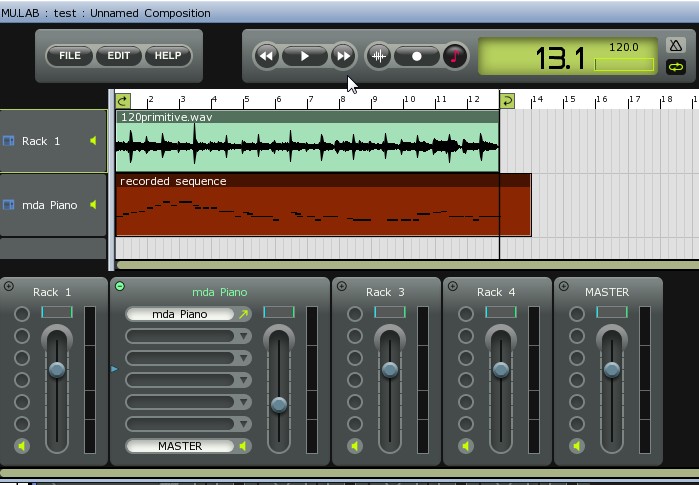

Overwrite: The new recorded events overwrite all events in the existing sequence.New Clip: The new recorded events are put into a new sequence.Merge: The new recorded events are merged into the existing sequence.If not, then the new recorded events are put on a new track in a new sequence clip.īut if a sequence clip is selected, you get these options: by playing on your MIDI keyboard or tweaking plugin parameter knobs, MuLab will check whether there is a selected sequence clip with a matching target module. There also is a global on/off switch that enables/disables event recording, for example you want to onlyrecord audio, but play your MIDI keyboard at the same time, without recording it. Here you can define, among others things, whether the recorded events should be automatically quantized. Most of the time you can simply click the record button in the Transport Panel and play what you want to record.įor detailed setup of event recording, right-click the record button in the Transport Panel -> "Setup Record Events". In case you notice that the recorded audio is not in sync with the music, you can finetune the "Audio Recording Latency Compensation" preference via MULAB menu -> Preferences.
#Event recording on mulab driver#
More in detail: If an audio recorder also records from audio input then the resulting audio recording will get a start marker that compensates for the device input latency so that the result sounds in perfect sync.īut this depends on how accurate the audio driver is reporting latency values to MuLab. Normally, if you record audio into MuLab, the audio will be positioned perfectly in sync with the music, just like you recorded it. This makes a single device from the built-in input and output making both available at the same time. This can be done via MacOS->Applications->Utilities->Audio MIDI Setup->Audio menu->Open Aggregate Device Editor: The solution is to make an aggregate device that uses the input/output from different audio devices on your system, and showing up as 1 device in audio applications.
#Event recording on mulab mac#
On systems with Mac MacOS 10.4 or later, the built-in audio input and output may appear as separate devices leading to the fact that you can't use both at the same time. MacOS specific issue: Where is my built-in input? If you want a metronome during recording, activate the metronome in the Transport Panel. You can set the prefered number of countdown beats via right-clicking the main record button or via the menu -> Edit Recording Setup. with compression and EQ, or even record the output of a synth plugin.Īlso note that when "Record From" is set to "Direct Audio Input" this means that the main audio input (MuLab App: audio in from the audio device / MuLab Plugin: audio in from host DAW) will be recorded, and that the audio input of the recorder module is discarded.įor more details see the Audio File Recorder. Note that thanks to the modular structure you can not only record audio inputs directly, but you can also record the audio inputs eg. Mac Core Audio: All available hardware audio inputs are enabled automatically.

That's only to be done once and independent from your projects.
#Event recording on mulab windows#
Windows ASIO: To enable the hardware audio inputs you want to use open MuLab's Audio Setup. The advantage of abstracting the hardware level is that you can not only record & process the audio inputs directly, but you can also insert FX plugins prior to recording. Note that there are two levels where audio inputs are managed: The hardware level and the modular level. Note that, by default, audio tracks use the Auto Arm feature which automatically arms the focused track and disarms the other ones. When you have already setup audio tracks then you can easily select which ones to record on by toggling the "Arm" button on the audio tracks which looks like a mini record button. Click the main record button in the Transport Panel.Choose the inputs you want to record from.Add a new audio track via the track button.When you record the sound of your piano with a microphone, then you're recording audio.īut when you only record which keys you're playing via MIDI, then you're recording the note events into an event sequence. With MuLab you can record two things: Record Audio and record Events (aka MIDI).


 0 kommentar(er)
0 kommentar(er)
